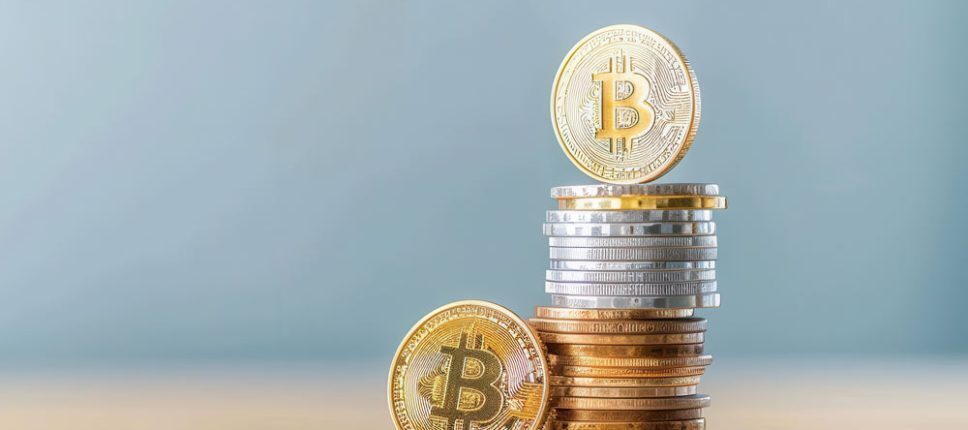What is an NFT Marketplace?
An NFT Marketplace is a platform where you can buy NFTs of all kinds, though there are specialized marketplaces as well, such as an NFT art marketplace that is solely meant for the sale of crypto art.
NFT Marketplaces also vary by blockchain, as multiple blockchains including Ethereum, Cardano, and Binance support NFTs, so marketplaces are often designated by blockchain as it is not compatible otherwise. Other than that, the marketplaces work just like traditional online marketplaces, only with crypto being used for payment and the transaction taking place digitally and verifiably on the blockchain.
The Best NFT Marketplaces
When looking for an NFT marketplace you should consider what you’ll be using it for (such as art or other collectibles), what crypto platform it exists on (such as Ethereum or Cardano) and the level of security the site offers. You should also compare fees as minting NFTs can be quite expensive on some marketplaces.
You should also think about whether you can actually remove your NFTs from the marketplace. The whole point of NFTs is that they are unique and that you can collect them and have custody over them so it’s important that you’ll be able to actually withdraw NFTs.
With all that in mind here’s a look at some of the best NFT marketplaces we’ve reviewed in this rapidly expanding space:
OpenSea
The self-proclaimed largest NFT marketplace, OpenSea is built on the Ethereum blockchain and offers a wide array of NFT products including art, sports cards, domain names, and NFT projects like Dencentraland and CryptoKitties. With millions of items for sale OpenSea lives up to its claim.
Creators can create their own items on the blockchain using OpenSea’s item minting tool without having to write a single line of code and OpenSea only takes 2.5% commission from sales on their platform.
- Collection Manager allows zero gas fee NFT minting
- Choose royalties on future sales
- Easy to use and navigate the platform
- Largest collection of NFTs on market
- Mobile app available for iOS
Rarible
Rarible is an NFT marketplace built on the Ethereum blockchain that aims to be a decentralized autonomous organization (DAO) one day
The platform uses their own cryptocurrency called RARI which is the first governance token in the NFT space. RARI enables the most active creators and collectors on Rarible to vote for any platform upgrades and participate in curation and moderation and is distributed at a rate of 75,000 RARI a week.
While artists are required to submit their creations for approval, Rarible allows anyone to be listed on its portal. Fees can be set by the seller, but Rarible always gets 5% commission overall. NFTs created on Rarible can also be found on OpenSea.
- Has its own native crypto (Rarible Token)
- Community oriented with goal of becoming DAO
- No coding knowledge needed to mint NFTs
- Set royalties for future sales of your art
SuperRare
SuperRare is an NFT art marketplace built on Ethereum that describes itself as “Instagram meets Christie’s”.
A more exclusive version of Rarible, SuperRare has a small number of curated artists and is currently in an early access stage. Those wishing to get their art on the platform can submit their work to be considered for the full launch of the platform. The initial purchase of a piece of art on SuperRare incurs a 15% commission fee for them but for each subsequent sale of the NFT creators receive a 10% royalty. This acts as a form of passive revenue if the artwork continues to get traded in the market.
- Artists receive 10% royalty for every secondary sale of their work
- Exclusive platform with some of the world’s top NFT artists
- Offer system allows you to show interest in art that is not listed for sale
Nifty Gateway
Nifty Gateway is an NFT art marketplace built on Ethereum with backing from Gemini, the crypto exchange created by the Winklevoss Twins.
NFTs on the platform are called “Nifties” and drops take place every three weeks and then after the drop the only place to purchase the NFTs is the Nifty Gateway marketplace where you can find works by celebrated artists and musicians such as Steve Aoki, deadmau5, Grimes, Kenny Scharf and Beeple.
Anyone can apply to be a creator and as an artist, you get to choose what commissions you receive, it could be 5% of every secondary sale, or 50%. Nifty Gateway takes 5% + 30 cents of every secondary sale regardless of artist fee.
- Exclusive Nifty drops every three weeks
- Some of the top musicians and artists in the world are on the platform
- Can purchase with credit card and no knowledge of crypto
Atomic Market
AtomicMarket is a shared liquidity NFT market smart contract that is used by multiple websites and built on the EOSIO blockchain.
Shared liquidity means that everything listed on one market also shows on all other markets and all transactions are done in WAX. The platform includes Topps Baseball, the official card of Major League Baseball., and other digital collectible NFTs for various digital card and collectible platforms.
BakerySwap
BakerySwap is an automated market maker (AMM) and decentralized exchange (DEX) on Binance Smart Chain (BSC).
It has a native token called BakeryToken (BAKE). BakerySwap is a multi-functional crypto hub offering a range of decentralized finance (DeFi) services, as well as a crypto launchpad and non-fungible NFT supermarket which hosts digital art, meme competitions, and NFT in games that users can pay for in BAKE tokens. You can use NFTs in ‘combo meals’ to earn bonus BAKE tokens.
Users can mint their own art and all sales incur a 5% commission fee.
Enjin Marketplace
Enjin which allows game developers to tokenize in-game items on the Ethereum blockchain.
It uses Enjin Coin (ENJ), an ERC-20 token, to back the digital assets issued using its platform, meaning that items can be bought, sold and traded with real-world value. This is where the Enjin Marketplace comes in, as Enjin powers many blockchain projects, from game item collections like the Multiverse and games like Age of Rust and The Six Dragons, to gamified reward programs such as Microsoft’s Azure Heroes, community-created collectibles, and NFTs by companies like Binance and Swissborg. Commissions on Enjin Marketplace are 2.5%
Foundation
Foundation is an NFT art marketplace built on the Ethereum blockchain that began with just 50 artists who were then given two invites each.
Foundation has since grown immensely, with an audiovisual collectible selling for 72 ETH, and a sale of a Nyan Cat for $590k. When there is an NFT resold on Foundation, the artist makes 10% on that secondary transaction, meaning the artist receives 10% of the sales value each and every time a collector sells their work to someone else regardless of sale price.
NFT Showroom
Built on the Hive blockchain, NFT Showroom is an NFT art marketplace that is open all users.
Hive is a fast and free blockchain meaning that NFT Showroom is very accessible. Artists of all skills can upload and sell their digital art, with Hive taking a 10% commission on initial sale, and if a piece is resold, they take 5% and give the other 5% to the artist, leaving the seller with 90%. You only need to open a Hive account and keychain to get started with NFT Showroom.
How to Buy from an NFT Marketplace
Generally, there are two ways to buy an NFT from an NFT marketplace, but regardless of which of these two ways you will need the native asset of the blockchain or platform the NFT is on. Some NFT marketplaces require you to have a wallet balance on the platform to make purchases, in which case you simply add what you want to your cart and check out. The more common way is to connect your wallet to the site through something like MetaMask, and then you select the art you want to buy and purchase it via a smart contract that works nearly instantaneously putting the NFT in your wallet and taking the funds required, all verifiable on the blockchain.
One thing to keep in mind when purchasing an NFT is that the value of the token you are using to purchase the NFT is likely fluctuating constantly, so even if you sell an asset for more of a token than you paid, that value could be less, meaning if you pay 1 ETH and ETH is worth $5000, but then sell it for 2 ETH when it is $2000, you actually lost $1000. Of course, it could work the other way as well.











